If you’re like most caring adults, when a kid shows you their artwork, your natural response is to say something nice to them about it – “Good job!” or “That’s so beautiful!”
As well-intentioned as these comments are, they actually NOT helpful if we want to encourage creative expression in kids, both at home and in therapy.
If you’re surprised by this, here are a few things to consider…
Children should make art based on their own ideas, interests, and creativity. Providing praise teaches kids to seek adult approval for their artwork. And this leads them to create artwork that they think will please adults and get praised, limiting their creativity and authentic self-expression. Kids should feel free to create art for themselves, not just for the approval others.
Children should experience their own enjoyment, pride, and sense of accomplishment in making art. Healthy confidence and strong self-esteem come from an internal sense of pride and mastery and a true understanding of your own abilities. Self-esteem that is based on the praise of others is fragile and easily damaged.
Children should be free to take risks and make mistakes in art. Not every artwork has to come out perfect or be “worthy” of praise. When kids get hooked on praise or feel that they have to meet a certain set of expectations, they become afraid to fail. Fear of failure ends up limiting kids as they stop trying new things or don’t want to try something if there is a risk of not succeeding. True creativity requires a willingness to risk mistakes.
Children should be allowed to make art that is messy, ugly, or just for fun. Not all art has to be beautiful, especially in therapy. Sometimes there is value in creating messy art, either as a way to express something or for the sensory enjoyment of it. Sometimes art is just about having fun and exploring the materials. And when one is using art to express inner thoughts and emotions, the result is not always going to be “pretty.”
Children should be able to make art without judgment or comparison. When adults comment on something, kids begin to think it’s important. So the more often that you use words like “good” and “beautiful” in reference to art, the more that a kid will think that these are important qualities of art…which then can lead to anxiety and fear about it being the opposite. Kids realize at a pretty young age that if some art is “good,” then some art must be “bad.” When I do art therapy, I often hear children comment that they are “not a good artist” or “not good at drawing.” Implied judgment and comparisons that they have heard have been internalized so that they start judging themselves.
If you’re an art therapist reading this, you are probably well-trained to avoid praise and other comments that imply judgment in therapy. You’re probably used to telling clients that the process can be as important as the product and that it’s not the point of art therapy to only make art that looks good.
However, not everyone who uses art in therapy or does art with kids has this training, so my hope is that this information will allow other counselors, play therapists, teachers, and parents to change the way they talk to children about art.
So, what can you say to kids instead to encourage creativity and self-expression?
“I see that you…” – Make neutral, observational comments about the picture, lines, colors, etc. This lets the child know that you are paying attention, but avoids making judgments. These comments can also encourage the child to then share with you about their reasons and process for what they did in the art.
“Tell me about…” – Ask the child to tell you about their picture or about a certain part. Again, this avoids judgment but is a good way to express interest in their creation and their ideas. This is also a great trick if you don’t know what something in the picture is. Asking “What is it?” often makes kids anxious or self-conscious – implying either they didn’t do a good enough job at drawing something that was meant to be representational or sending the message that everything in art has to be something.
“You seemed to be working very hard…” – Acknowledge the effort that went into creating the art. This encourages kids to work hard in the future by placing emphasis on effort and focus, not on product or talent. There’s been a lot of talk/research in the past few years about “grit” and “growth mindset.” The comments that you make about a child’s art are another way to encourage these positive qualities.
“This looks very creative (expressive, colorful, sad, energetic, etc).” – Find other qualities about the art to notice and comment on besides whether it is “pretty” or “good.” Like I mentioned above, encouraging creativity and self-expression in art means helping kids learn (or remember) that there are more reasons to make art than just beauty.
“How did you…?” – Ask questions about the process. For many kids, the process of creating the artwork is just as important as the final product. This question helps kids to be aware of their process, including the choices that they made, the way that they solved problems or challenges in the creative process, and the way the art changed as they worked on it.
“Can you tell me a story about your picture?” – Encourage the child to tell you a story to expand the creativity. For most kids, this question is a great way to encourage imagination and self-expression. If you are in therapy or counseling, the story that they tell can give you even more information than what is already expressed in the picture. Be aware that this is a better question for representational type art, not for art that was created for the process.
“How do you feel about your art?” – Ask the child about their own feelings or thoughts, being open to any positive or negative response that they have. This puts the focus back on them, not on adult approval. It allows for further exploration of feelings in the therapeutic process. Sometimes they will feel proud and happy about their art; sometimes they will feel frustrated and disappointed. These are all important feelings to be discussed and explored.
For more ideas and tips about art in therapy, be sure to click here to sign up for the newsletter.
Carolyn Mehlomakulu is a Licensed Marriage and Family Therapist and Registered Art Therapist in Austin, Texas who works with children, teens, and families. For more information about individual therapy, adolescent and child counseling, family therapy, teen group therapy, and art therapy services, please visit: www.therapywithcarolyn.com.
This blog is not intended to diagnose or treat any mental health conditions. All directives, interventions, and ideas should be used by qualified individuals within the appropriate bounds of their education, training, and scope of practice. Information presented in this blog does not replace professional training in mental health, psychotherapy, counseling, art therapy, or play therapy. Although anyone can have a healing experience with art, art therapy requires the direction of a trained art therapist.
This blog includes affiliate links (see full disclosure here). If you’d like to help support the blog without any extra cost to you, please click through on Amazon links and shop as you normally would. Your support is greatly appreciated!
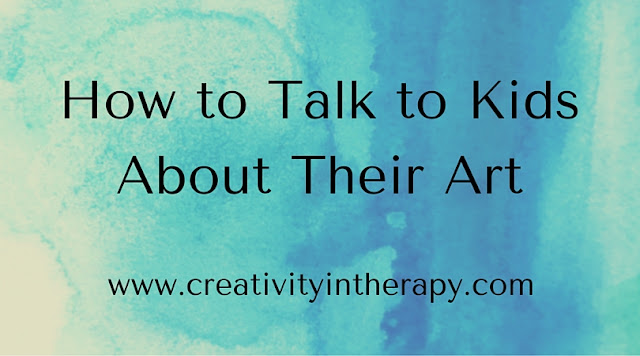

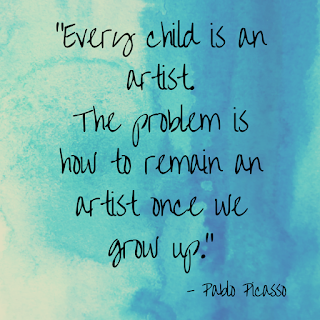
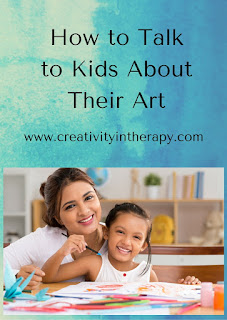
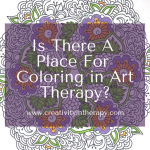
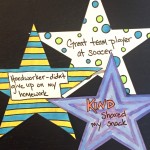



I really enjoyed your blog.. I teach play therapy and talk about this very issue, encouragement versus praise. I also talk about when children say, “I don’t like this art work, or I don’t like the way it turned out.” Adults have a tendency to say, “Oh, I like it, it is good”. I explain that adults don’t have to be responsible for making children’s feel happy, and it is okay if the child is disappointed with the art work. Contradicting the child’s feelings can be confusing and harmful. Instead one should use empathy and validate the child’s feelings.
Sonia Hinds, Play Therapist
Sonia – that’s a great point! Sometimes being too quick to praise and reassure feels false to kids and contradicts their experience.
I love the way you framed the questions – this really helped me to reflect on my own practice. Thank you!
Jackie – so glad it was helpful for you!
Very good write – up. I certainly love this website. Thanks!
Very good write-up. I certainly love this website. Thanks!
Thank you for this wonderful blog. It is a big help in the early days of my Art Therapist practice.
Blessings to you.